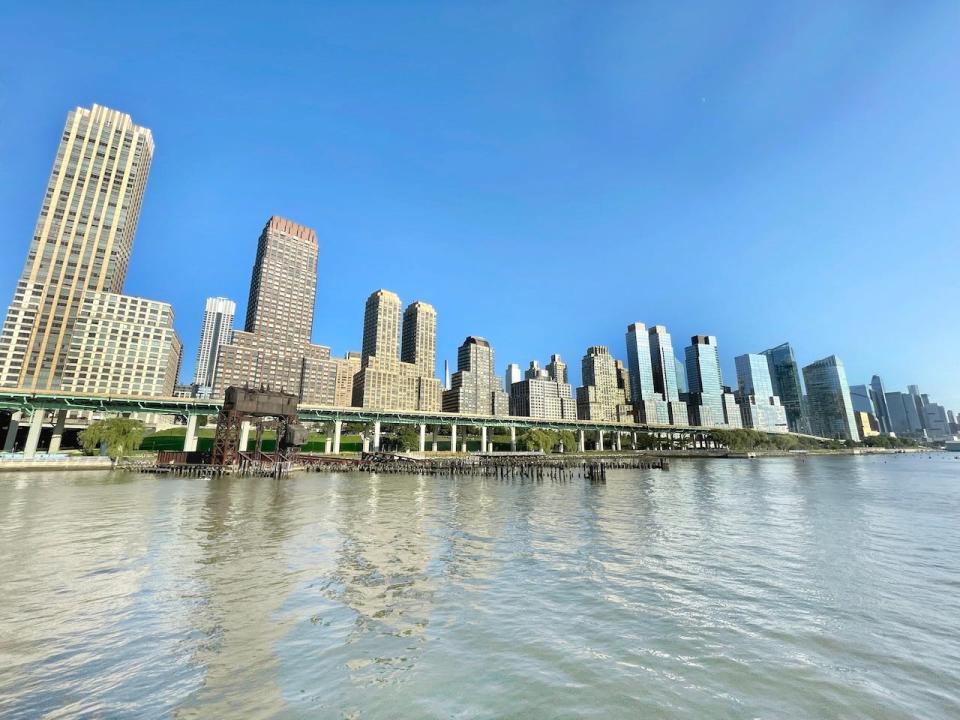New York City briefly opened its housing voucher waitlist. But getting that assistance is as unlikely as getting into Harvard.

New York City received over 630,000 applications to join its waitlist for federal housing vouchers.
But the city will issue just 20,000 new vouchers, amid a severe housing affordability crisis.
A third of New Yorkers spend more than 50% of their income on rent.
Finding an affordable apartment in New York City has become ever more challenging for low-income people — and an expansion of key federal assistance isn't likely to help much.
When the city opened its waitlist for housing choice vouchers for the first time in 15 years earlier this month, it was flooded with more than 630,000 applications for the federal rental assistance program, Gothamist reported.
To be eligible, individuals can make no more than $54,350 a year, and families of four can't make more than $77,650. But the city is capping the waitlist at 200,000 applicants, selected randomly. Ultimately, though, it will only issue 20,000 new vouchers, bringing the total number of vouchers up from about 96,000 to about 115,000, the New York City Housing Authority said. This won't happen overnight — the vouchers will be issued at a rate of about 1,000 a month. And those on the waitlist have to reapply every two years.
As a result, just over 3% of those who've applied to be on the waitlist will end up snagging one of those 20,000 additional vouchers — about the same as the percentage who get accepted to Harvard University.
New York City has the largest housing voucher program in the country, but it still falls far short of need. Rents and home prices have skyrocketed in recent years, and increasing numbers of New Yorkers can no longer afford housing. More than half of New York City tenants are rent-burdened, meaning they spend more than 30% of their income on rent, and a third of New Yorkers spend more than half of their income on rent.
Of course, this isn't just a New York problem. Communities all across the country are facing severe housing affordability crises and don't have sufficient vouchers. Half of renters across the US are rent-burdened.
A flawed system
Housing vouchers are the biggest and most effective housing assistance program in the country. They help about 5 million people afford their rent every year.
There's lots of evidence that vouchers effectively lower the risk of homelessness, reduce dangerous housing conditions like overcrowding, and even help kids do better in school. And they significantly lower recipients' rent burden. Voucher holders pay about 30% of their income toward rent, while the Department of Housing and Urban Development covers the rest — up to what it determines to be fair market rent.
But Congress severely underfunds the program. Just about one in four Americans who are eligible for a federal housing voucher gets one, and about 10 million additional low-income households across the US are going without the help they qualify for.
And once someone gets a voucher, it can be difficult to use. With rents soaring across the country, it can be hard to find a home that fits the government's definition of fair market rent. And voucher recipients have a limited amount of time — usually just a few months — to find a home before they lose their voucher.
Discrimination against housing voucher holders by landlords is pervasive, even in places that prohibit it. Some of the resistance to vouchers from landlords has to do with the system's burdensome administrative processes that can make accepting a voucher costly and inefficient. For example, homes must be inspected by the local housing authority to make sure they meet a slew of health and safety standards. But that process can create lengthy delays, cause landlords to keep a unit empty and miss out on rent payments, and ultimately result in the voucher holder losing out on the home.
Fully funding housing vouchers is key. But the root of the problem in New York and elsewhere is a lack of housing supply. Until New York has many more homes, its vouchers won't be able to keep up.
Are you a New York City housing voucher recipient or a landlord who's struggled with the housing voucher program? Reach out to this reporter at erelman@businessinsider.com.
Read the original article on Business Insider

 Yahoo Finance
Yahoo Finance 